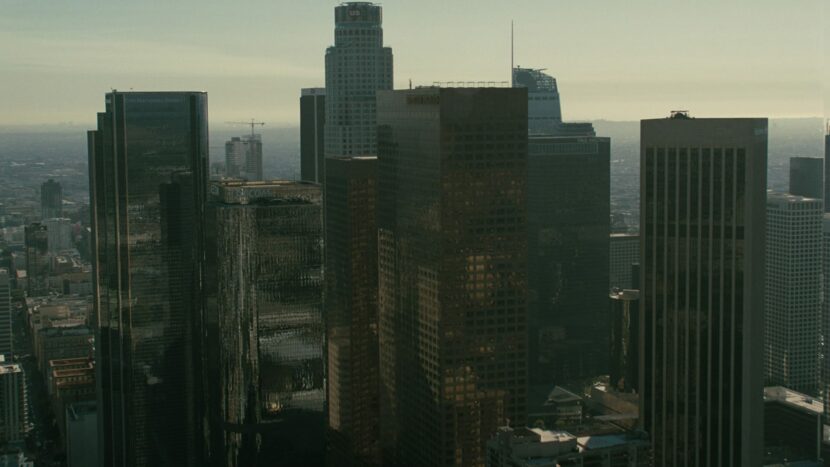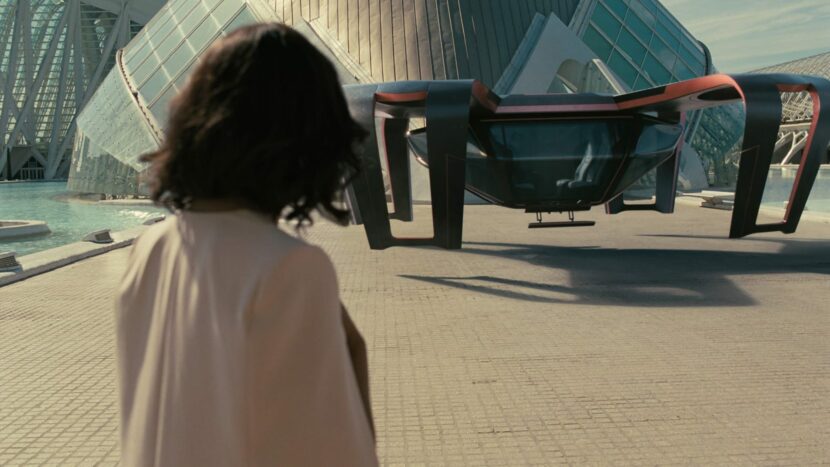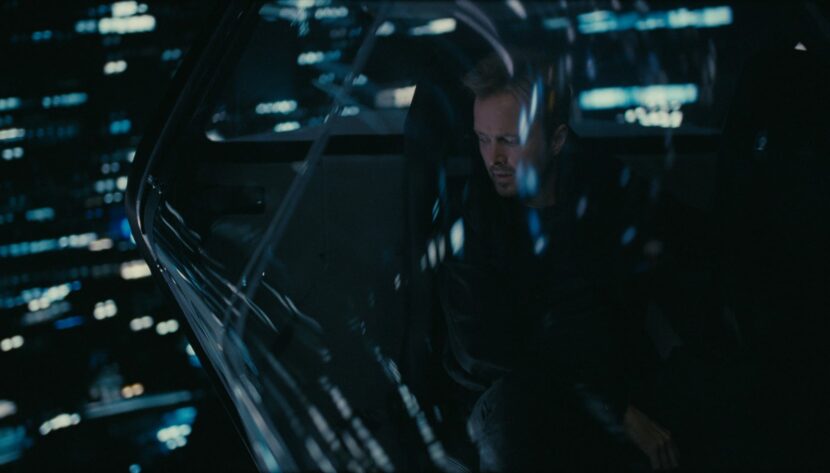Pixomondo’s VFX Supervisor, Nhat Phong Tran, is a multiple Emmy nominee in visual effects. He has a background in compositing, traditional film, color/DI, computer graphics programming and programming. This year he was nominated for his work on Westworld, where he worked directly with the show’s overall VFX Supervisor Jay Worth. He was also in consideration for his work in Euphoria. We sat down with Tran to discuss his work and that of the team at Pixomondo in LA.
Euphoria
Tran’s work is often very technical, he has a background in the artistic side of the craft and also programming. His work is both visually strong and often very ambitious. For Euphoria in episode one of the teen drama television series created by Sam Levinson (based on the Israeli miniseries by Ron Leshem), the recovering teenage drug addict Rue Bennett, played by Zendaya, literally climbs the walls at a friend’s party.
COURTESY HBO
The script called for Rue to walk down the corridor, walking up the walls, stepping over other partygoers, with the camera following her closely. While the audience moves with Rue other people seem to be going about their business clearly defying gravity. The solution was to have a rotating set, with just a few stunt people cabled in place, who would invert with the set as it rotated. Zendaya could therefore move past them and over them easily. But to sell the illusion other people needed to be walking and moving in the set. To add these additional people motion control was used on a second matching set
The set with the principle action was filmed using a regular super techno crane / non-motion control camera rig. Once the director was happy with the performance and the manual movement of the camera, the Pixomondo team then did a detailed camera track in 3Dequalizer. Once solved this resolved into a set of moves for a motion control arm, that was correct for a completely separate but matching set. The trick was to not only solve for the camera moving alone but for Tran’s team to simulate the set rolling and compensate for that effect in the MoCap. Instead of the second set rotating, the MoCap camera head rotated. In theory, both corridors would line up. The first with a more stable manual camera and the set rotating, and on the second day on a stable set with the MoCap camera spinning. While the theory held up fairly well, the complex effects meant there were a series of small problems to be solved.

The first problem was that to be on the safe side the second lens on the MoCap rig was slightly wider than the original lens. “We decided to go a little bit wider, in case there was any slipping we would have additional real estate around the edge of the secondary element plate” Tran explained. To help, each lens was profiled for chromatic aberration and curvature. Thus the two 6K Arri plates needed careful hand alignment during compositing.
A slightly bigger problem was the acceleration profile of the MoCap rig. While a Motion Control rig can match itself perfectly, it has its own acceleration and deceleration profiles when running at speed. If this had been a model shoot, the camera could match frame for frame, but it can’t match the inertia profile of a techno crane rig perfectly. It would successfully hit all the correct aligning keyframes, but it would speed up and slow down in-between each keyframe slightly differently. This would make the people appear to slightly float in and out of alignment.
Finally, it was key to match the lighting. While the sets match closely, a set will have slightly different lighting if actors are moving through the shot. “There was a difference in the atmosphere (smoke) between the two sets,” Tran explained. As it is almost impossible to match fogging levels on two different sets, especially with one rotating, “because of that we decided to shoot the extras on the second day without any smoke at all, and then we could match them to the hero take with Zendaya”. This was achieved primarily via careful colour correction and diffusion during the composite process.
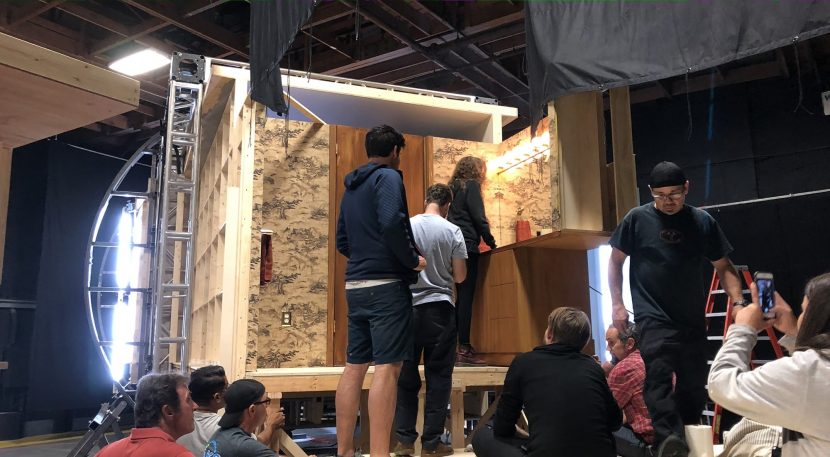
In the end, the Nuke compositing team at Pixomondo aligned the two plates perfectly. Aided by a few key visual tricks such as cigarette smoke, the result is fluid and mesmerizing.
Westworld
Pixomondo did a lot of environment work and exterior visual effects for Westworld season3. The Pixomondo’s shot count was 395.
Environments
The real world of Westworld was a blend of several cities with a strong mix of LA and Singapore in particular. The city skyline was made to look more harmonious and environmentally friendly than LA, with a lot of inspiration and reference from the work of Bjarke Ingels, a Danish architect and founder of the Bjarke Ingels Group. Ingels architecture has an optimistic vision of the future where art, architecture, urbanism and nature are more balanced.
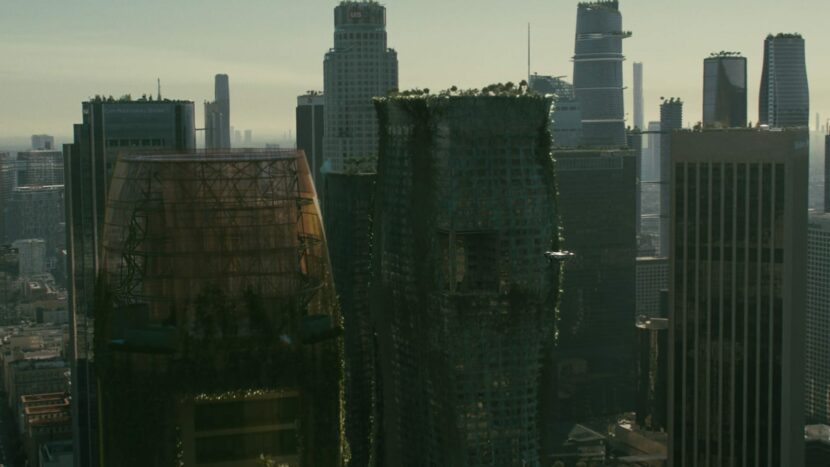
“The production art department had a lot of references of buildings from around the world,” explained Tran. The team was keen to make sure none of the skylines seemed to repeat so a procedural approach was applied to generate buildings “using CityEngine, which is just great for that” he added.
CGI
Pixomondo worked on a set of more traditional VFX shots, blending live-action and CGI. The pipeline was animation in Maya and rendering in Arnold. (There was some Mantra rendering for the CG building referenced above). The show was filmed on 35mm film (log space) and delivered in 1920×1080 resolution. The majority of the work came from Pixomondo’s LA office.
Virtual Production
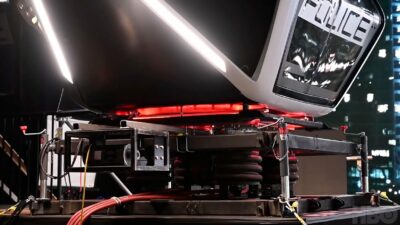 LED walls were used this season on Westworld to capture various in camera effects shots. This approach reduced green screen and helped with shots such as the actors in the flying air pod shots. On set there was a gimble set piece for the actors to sit in and this was surrounded by a digitally rendered moving city scene. The Flying sequences used pre-rendered footage to obtain realistic reflections on the gimble rig and cast the correct contact lighting over the actors. As the creative team wanted the camera work to look as if it was filmed from a camera attached to the craft, the background did not need to exhibit parallax since the cameras were very close to the actors (see below).
LED walls were used this season on Westworld to capture various in camera effects shots. This approach reduced green screen and helped with shots such as the actors in the flying air pod shots. On set there was a gimble set piece for the actors to sit in and this was surrounded by a digitally rendered moving city scene. The Flying sequences used pre-rendered footage to obtain realistic reflections on the gimble rig and cast the correct contact lighting over the actors. As the creative team wanted the camera work to look as if it was filmed from a camera attached to the craft, the background did not need to exhibit parallax since the cameras were very close to the actors (see below).
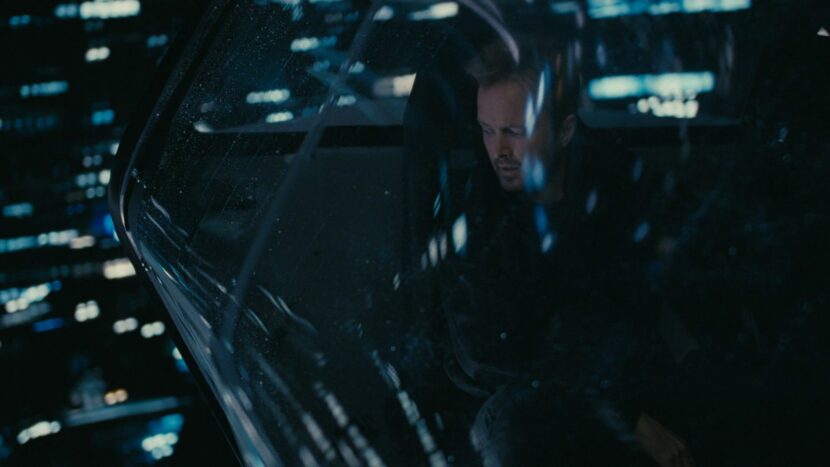
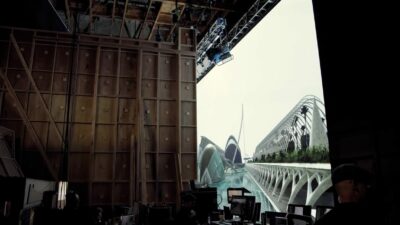 For many of the window shots in the show, such as views from the offices, UE4 was used to produce an accurate realtime exterior. These real-time assets were not provided by Pixomondo for Westworld. These office scenes with Charlotte Hale were filmed with Fuse LED screens, combined with Profile providing on-set logistics, and CG environments in UE4 by El Ranchito.
For many of the window shots in the show, such as views from the offices, UE4 was used to produce an accurate realtime exterior. These real-time assets were not provided by Pixomondo for Westworld. These office scenes with Charlotte Hale were filmed with Fuse LED screens, combined with Profile providing on-set logistics, and CG environments in UE4 by El Ranchito.

